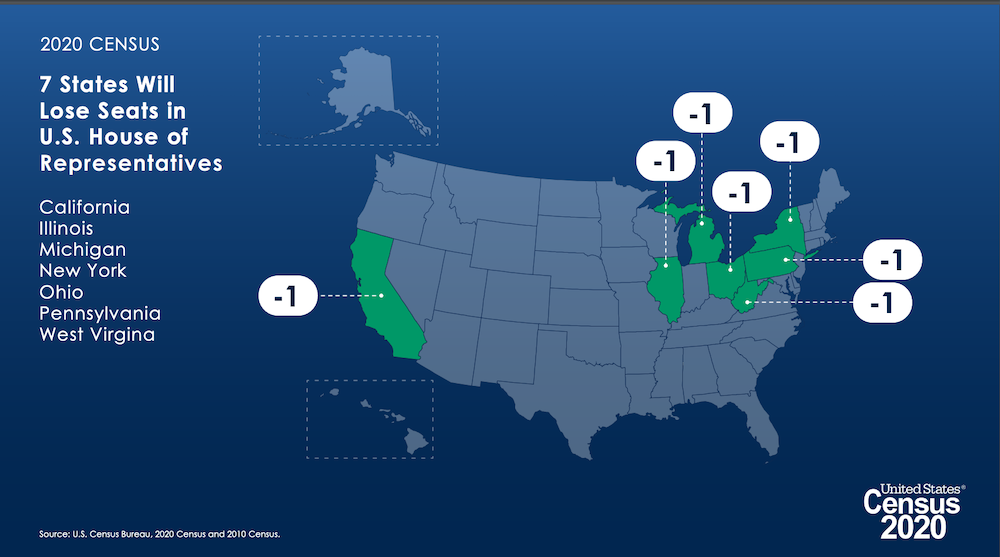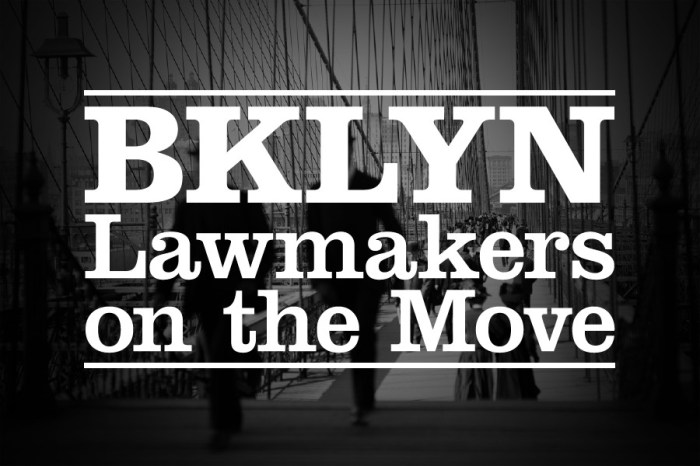The U.S. Census Bureau has finished tallying the 2020 Census results today Monday, April 26, and unfortunately, it looks like, despite all the efforts made during the COVID crisis last year, New York State will be losing one congressional seat in the U.S. House of Representatives.
New York’s populace count came in at 20,201,249 residents with 14,502 people overseas, but it’s apportionment count was 20,215,751 with 26 apportioned seats, one less than last year.
Apportionment is the process of distributing the 435 memberships, or seats, in the U.S. House of Representatives based on census counts, said the Bureau. An apportionment has been made by the U.S. Congress based on each decennial census from 1790 to 2020 through natural disasters and viral outbreaks for centuries, except for the 1920 Census.
The apportionment population includes residents in the state plus the overseas military personnel and their families living with them.
Census experts at the virtual conference today said that their quality checks include comparing the populations with the decennial count to make sure their estimates were accurate.
“We do know that from our population estimates that the State of New York has experienced negative net domestic migration, meaning there were more people moving out of the state of New York over the last decade than moving into the state,” said Chief of the Population Division at the U.S. Census Bureau Karen Battle.
Another senior census expert, Kristin Koslap, said that New York lost its congressional seat by just 89 people.
“The last seat went to Minnesota, and New York was next in line. If you do the algebra equation, it determines how many they would have needed, and its 89 people but that’s if you hold the population of all other states constant,” said Koslap.
US. Rep Hakeem Jeffries (NY-08) said that when the city started the census push in New York last year, many people expected the state to lose two seats.
“But through the tireless advocacy of community leaders and the civic engagement of New Yorkers, we came just 89 respondents away from not losing any seats. This news will not diminish the commitment of the congressional delegation to fight for every single dollar duly owed to New York State and our constituents. Never mistake a knockdown for a knockout, and never count out New York,” said Jeffries.
The nation’s current population, according to the Bureau’s count, is 331,449,281 million. The second slowest growth rate in US history.
In all, seven congressional seats among 13 states were shifted around, said the Bureau. Six states gained seats: Texas with 2; Colorado, Florida, Montana, North Carolina, and Oregon will gain 1.
Seven states, including New York, will lose one seat: California, Illinois, Michigan, Ohio, Pennsylvania, and West Virginia.
The general South and West regions grew the most over the last decade, said Acting Director of the U.S. Census Bureau Ron Jarmin.
“We have taken the time we needed to produce the high-quality statistics that we and the public expect. While no census is perfect, we are confident that today’s 2020 census results meet our high data quality standards. We would not be releasing them to you otherwise,” said Jarmin.
“In 2020, our office worked together with partners to drive up Census response rates in Brownsville and across our diverse district,” said Senator Zellnor Y. Myrie (D-Brooklyn).
“Against the odds– a global pandemic, a federal government looking to trip us up at every step, and a governor who was slow to deploy needed resources– we showed up strong. New York’s response rate was a historic 61.9%. Regardless of today’s population estimates, our community left it all on the field last year and fought hard to protect needed resources and representation,” said Myrie.
[Updated with Jeffries’ comments]













